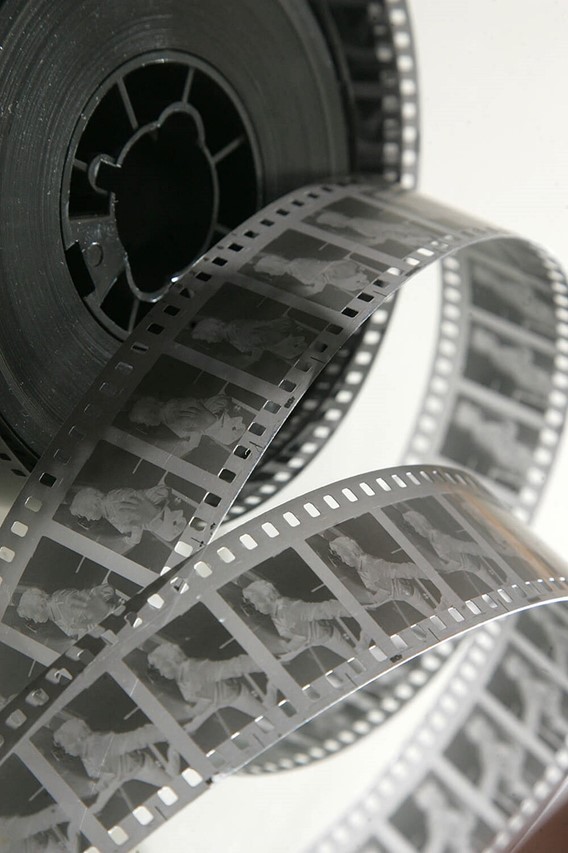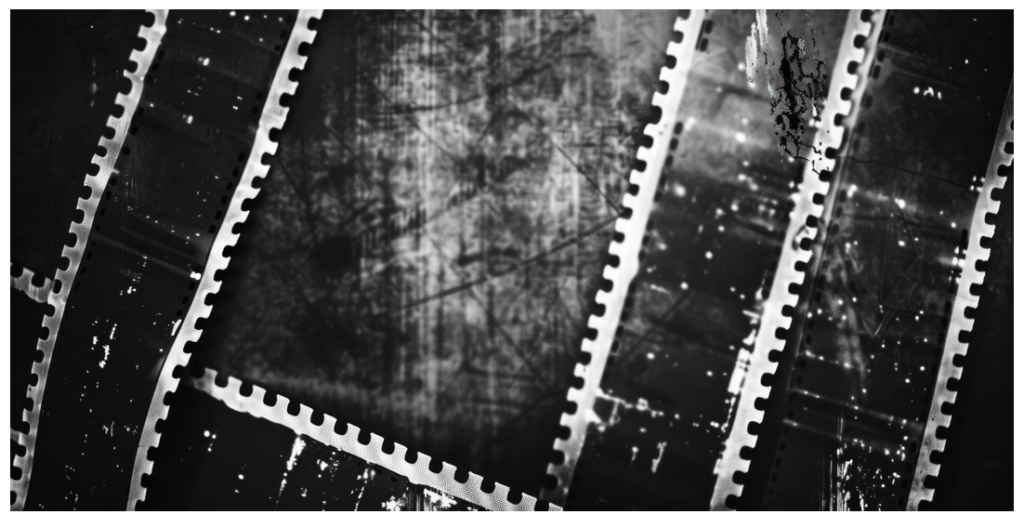Everyone likes the new shows/movies that streamers are constantly adding (and subtracting) to lure and retain viewers. But audiences also like old “familiar” shows/movies as well as projects they didn’t even know existed. There are thousands (millions?) of hours of informative/entertaining content stored in studio/streamer vaults. The industry needs to protect those ultra–valuable earlier projects, dust them off, and give people a chance to watch them again… and again.

“There are only two castes in India. The first one, those who speak English. The second, those who do not speak it.” –Mr. Dave, Last Film Show, Incognito Films, 2021
Digital content creation, production, and distribution is probably the best thing that happened to the entertainment industry. It’s also probably the worst thing that ever happened to the industry. Ask anyone who has a long history in the video content creation industry.
The first digitally filed and post-produced feature film was Windhorse (1998), shot in Tibet and Nepal. Even then, it had to be transferred to 35mm film so it could be shown in theaters. In 1999, George Lucas challenged the celluloid-based industry by blending digital footage with film footage in the production of Star Wars: Episode I – The Phantom Menace. He liked the results and said from then on, all the sequels would be done with hi-def digital video.
It has been a continuous “disagreement” ever since as to the quality—the real look/feel of the content—which will be carried on for years, or at least until the last die-hard producer is buried. Producers like J.J. Abrams, Quentin Tarantino, Christopher Nolan, Martin Scorsese, Ang Lee, and others still feel that projects need to be created on film stock and, at worst, with mixed film formats. Even though they now use digital capture, workflow, production, and storage, longtime indie filmmakers like John Putch do their film work digitally because it’s less expensive, convenient, and the digital workflow is faster and easier, but still….
You may not know a lot of John’s work, but you may have heard, and seen, his 2006 film Mojave Phone Booth. Mirroring the slow demise of film stock, the isolated, bullet-ridden phone booth has disappeared from the landscape, but it still lives in John’s movie and a VOIP (voice over IP) number we think you can still call: (760) 733-9969.
Would John have preferred to use the “true” filmmaker’s celluloid? Maybe yes, maybe no. Like most filmmakers, he has “adapted.” He still maintains a hard drive-based library of his projects using new hard drives (multiple copies in different locations) for every project and rotates the content to new drives on a programmed basis to ensure the content is never lost.
It’s the same program that Netflix’s library director explained to us several years ago at an HPA (Hollywood Professional Association) event. We understand all the “logic” of creating content digitally; but still, something is lost when content isn’t captured and stored on film stock. It feels as though the very heart and soul of content creation is lost when it is simply reduced to a bunch of 1s and 0s.
But there’s no going back, and the video stories still have to be captured, saved, and preserved for tomorrow—hopefully, the way they were initially envisioned by the filmmaker and first seen by the viewer. Unfortunately, that doesn’t always happen, whether on celluloid, videotape, or hard disks.
Today, the focus of the content entertainment industry is increasingly on streaming profitability, which means most of the attention is on developing new, different content, running it for a period of time, discarding projects that have run their course, and replacing them with newer, different content.
The good news is that viewers not only want new stuff, but they also want comfort entertainment—shows/movies from years ago that are familiar and a joy to watch again, and again, like putting on an old shirt or blouse and recalling earlier experiences.
But, for some movies/shows, it’s too late.

In 1937, 20th Century Fox’s film storage facility in New Jersey destroyed millions of dollars and hours of nitrate film, including most of the firm’s silent films produced before 1932 and projects from several other studios. Technically, the fire was caused by the decaying film, which led to spontaneous combustion and produced its own oxygen supply when it burned. The fire destroyed more than 75% of Fox’s earliest feature films as well as films/negatives and prints scheduled to be archived in the Museum of Modern Art’s film library. In addition to improved fire prevention guidelines for film libraries, the loss also led to the SMPTE (Society of Motion Picture and Television Engineers) push to develop improved film technology, which led to the use of cellulose acetate film. The moves didn’t eliminate the loss of films due to fires such as the 1965 MGM vault fire and 1978 National Archives vault fires, but, as they say, it could have been worse.
Another contributor to early TV shows/films being lost was the switch to digital content as well as budgets and lousy thinking. One of the “benefits” of videotape was that it could be used again and again and….
Hundreds (thousands?) of hours of news and TV shows were shot, aired, and the tapes were used again and again—i.e., overwritten). Of course, producers, directors, actors, and, ultimately, network executives realized they had lost tens of thousands of rerun and residual payments, so that process stopped.
Once, while in Atlanta, we visited CNN and walked through row after row of tape machines. On a regular basis, technicians would go from machine to machine rewinding, retensioning the tapes so the content wouldn’t be lost. We’re pretty sure that today, the Warner Bros. Discovery (WBD) organization has transferred all of that content to hard drives for “safe” storage. If it hadn’t, we’re pretty sure CEO David Zaslav would have viewed the work as a great place to cut costs, as he attempted to with Turner Classic Movies’ (TCM’s) preservation efforts. But thanks to the intervention of folks like Martin Scorsese, Steven Spielberg, and Paul Anderson, that didn’t happen. But yeah, Zaslav thought it would be a be a smart savings for shareholders.
Fortunately, there are studio and streamer bosses who understand the value of creative work and creative content. Despite his present balancing act to make Disney+ a profitable venture, Disney’s CEO Bob Iger also has a good understanding of the value of the organization’s rich cinematic history. Ranked as one of the world’s most valuable worldwide brands, Disney is easily one of the world’s largest media conglomerates and the home of Disney Animation, Walt Disney Pictures, ESPN and ABC networks, Marvel, Lucasfilm, Pixar, Hulu, and 20th Century Studios.
Valued at about $55 billion, the Mouse House’s library is home to about 27% of the film industry, so preserving and protecting the organization’s content is as important as developing new stuff. Being responsible for so much of the world’s entertainment may have been why England’s Queen Elizabeth II named him honorary knight of the British Empire before she passed.
Iger has been with Disney and its companies for more than 40 years and has seen/heard the horror stories of conscientious and comprehensive content management—especially in today’s digital content environment. However, it’s still possible for a file to be corrupted, improperly transferred, or a hard drive to fail (yes, even in cloud environments) or simply vanish. One of the most widely known occurrences happened in Disney’s own Pixar operation in 1998, when an employee accidentally entered the wrong command and nearly all of Toy Story 2 was deleted. Fortunately, Pixar producer Galyn Susman was working from home while on maternity leave and had a two-week-old backup copy on her personal computer, so nearly everything was recovered… nearly everything.

Similarly, Netflix co-CEO Ted Sarandos knows the value and fragility of the video stories the firm green-lights and acquires. Sarandos started his entertainment industry career handling/managing video cassettes, DVDs, and, ultimately, digital projects around the globe, so he has heard all the horror stories of thousands of hours and millions of dollars’ worth of digital shows/films disappearing in the blink of an eye.
We get it, there’s a constant consumer demand for new, different, better films/shows. New TV shows and movies are what keep the video story industry moving forward and, more importantly, keep tens of thousands of writers, producers, directors, actors, and production/post people gainfully employed. At the same time, Netflix (and Amazon Prime) constantly prove there’s still a lot of interest in older projects and series that have appeared elsewhere in the recent and distant past.
Before Godzilla Minus One was scheduled to be released, there was a rush of people watching and rewatching as many of the 37 previously produced/distributed Godzilla films. Prior to the release of Kingdom of the Planet of the Apes, people were given expanded guides on what order to watch the earlier Planet of the Apes projects to appreciate the twists, turns, and lore that began back in 1968. By the time John Wick: Chapter 4 finally hit Amazon Prime, we had refreshed ourselves on Keanu Reeves’ earlier action thrillers… twice.
Or, to state the obvious in studio/streamer boss terms, there’s still a helluva lot of money sitting in those vaults.
Tubi, Pluto, and the other free ad-supported services know that all too well. It’s not just cheap—a couple of minutes of ads per hour is nothing—but as the growing number of subscribers will tell you, there’s something fun and relaxing watching a series or movie you’ve seen before that has been locked away in some studio’s or streamer’s vault or hidden away for several years in an unused salt mine in Kansas. They’re valuable studio/streamer assets that can generate honest-to-god profits from the current and the new generations of viewers. And you can say the same for every studio and production operation in every country, regardless of the native language.
If you want to be even more noble about their archiving, you can think of them as custodians, guardians of the world’s fragile digital video story past, present, and future. But it’s even more precarious for indie filmmakers like Putch and our longtime friend and documentary filmmaker Cirina Catania because their creative art can disappear.
Fortunately for them, as well as fellow indie filmmakers, family legacy owners, and small studios, there are specialists like Hollywood Vaults housed in non-descript facilities around the globe that specialize in protecting the rich history of filmmaking, filmmakers, and celebrities. The quiet organizations have facilities that are loaded with state-of-the-art film/fire suppression, rigorous temperature/humidity control, and “aggressive” security monitoring. Walking through the building and seeing drawers and shelves filled with photographic and film/digital audio/video projects makes you wonder how you can put a value on the creative work we take for granted. Oh sure, you can store the work in someone’s cloud somewhere and hope for the best. But the biggest problem with cloud archiving is that stuff happens. And it’s simply… gone!
But somehow, we feel creators would have greater peace of mind knowing that their creative work is at one—or more—physical locations because someday, people will want to see, enjoy, relive the results of their endeavors.
Yes, there’s a real kick and sigh of relief when you do the final edit and wrap a film. But nothing in the world is really good unless it’s shared with folks who want to see it! It’s why people like the teacher Mr. Dave said in Last Film Show, “Yes. Go and learn.”
A library is as valuable as the new films people are putting out, and the sad fact is 90% of all American silent films made before 1929 and 50% of American sound films made before 1950 have been lost. Globally, the loss of the industry’s rich heritage in every country is probably the same.
It’s impossible to re-create, re-capture those video story moments. The loss is impossible to calculate or even fathom.